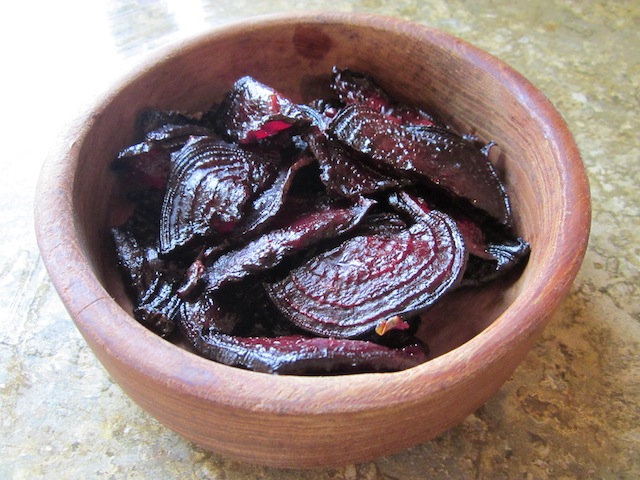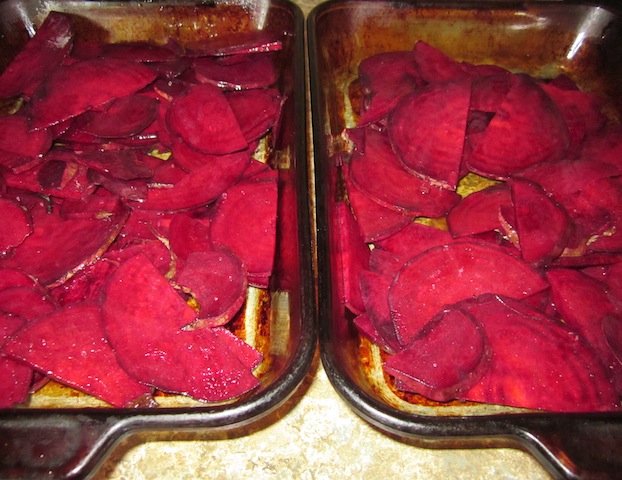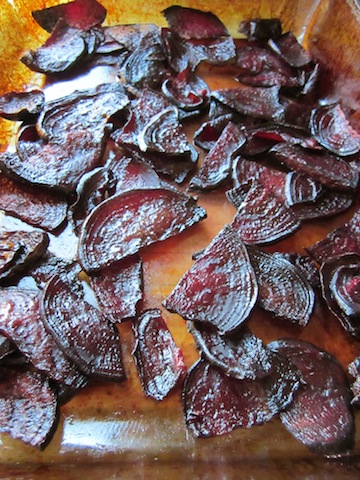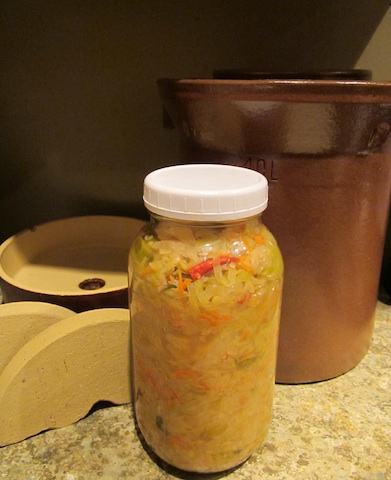
Opening the last crock in the spring is always an adventure. I am sometimes horrified by what I find on the top layer. But below is always beautiful kimchi with a complex, rich flavor. If at all possible, eat a small amount of fermented food with every meal.
This week my family have been working on a modified root cellar for winter storage. Traditionally, a root cellar would be built into the ground. This would give the vegetables a consistent temperature and humidity throughout the seasons. We will try to build a real root cellar next spring.
This winter we will have to be satisfied with a modified work shed. The work shed is a typical 8’x12′ wood-frame constructed building. The building will be too dry. We will have to put pails of water in the building to increase humidity. We will have to heat the structure during the coldest parts of the winter, something a true root cellar would not require.
We will be sourcing vegetables for storage over the next few weeks. We will be looking for potatoes, onions, carrots, beets, cabbage, assorted types of squash, garlic, hot peppers, parsnips, rutabaga, turnips and shallots. As I said before, I am not a local food zealot. But I like to buy as much as I can locally. My largest household expense is food. When I purchase my food locally, my money stays in our community. Also, the quality is better. It is great to be able to look at my plate and know where everything on it came from. It makes me feel somehow more connected.
I am madly making sour kraut and kimchi. I am always amazed at how many cabbages can go into a crock. These crocks will be stored in the root cellar for later consumption.
There are lots of great places to find local food for root cellar winter storage. These are some of the producers I have used this year:
1. Zaparango Organic Farm (certified organic)
Robert Vanderlip T: 250.318.0235
potatoes, carrots, onions, assorted squash, livestock feed corn
2. Lyne Farm (un-sprayed)
Liz Lyne T:250.578.8266
pickling cucumbers, beets, carrots
3. Farmhouse Herbs (certified organic)
Paula and Mendel Rubinsons T: 250.373.2312
pickling cabbage, onions, shallots, parsnips
4. Gort?s Gouda Cheese Farm (certified organic)
T: 250.832.4274
raw gouda, smoked raw gouda (Have Gort’s cut the large wheels into eight segments and vacuum pack. Each piece will naturally age and easily last through the winter months.)
5. Highland Farm (certified organic)
T: 250.803.0048
garlic, cherries, apples
Undated May 13, 2012: Last winter we finished the root cellar. It is forty feet long and three feet wide. There is another ten feet of covered space on the outside of the root cellar for storage of garden equipment. Here are some pictures taken as I clean out the root cellar today. It will give you an idea of what to expect if you store high quality produce.

This is our new root cellar. The south wall is a retaining wall of concrete block and the floor is gravel. The north wall is the back of the warehouse. The covered outside area is great for storing garden equipment.
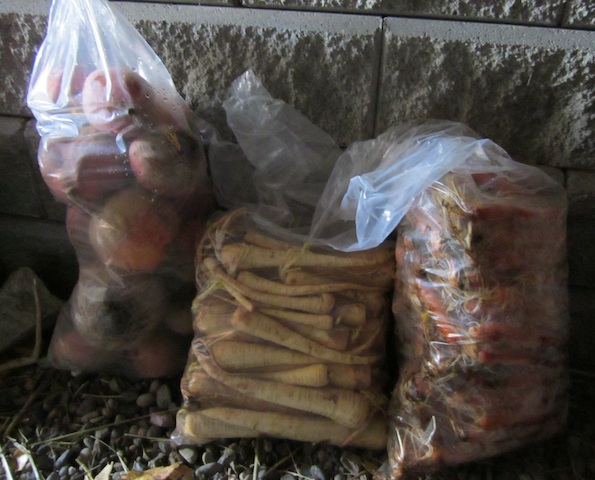
These yellow beets, parsnips and carrots were purchased last September from Farmhouse Herbs. I should have opened the bag of carrots to let out extra moisture. The vegetables are still edible after over seven months of storage.

This is the last of the garlic and potatoes. I ran out of onions last week. After over seven months of storage the garlic is still very good. The potatoes need to be peeled but are still edible.
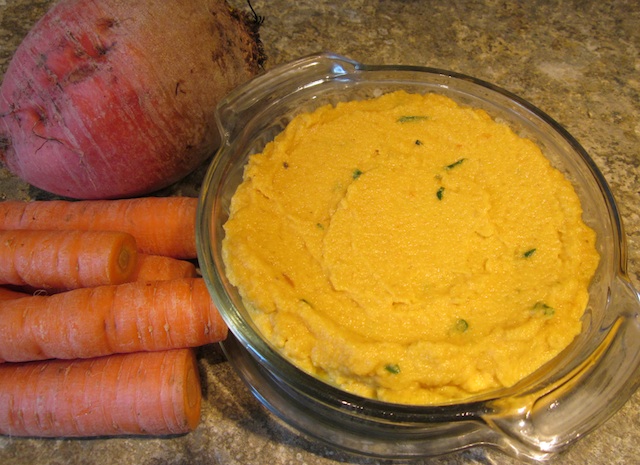
This root cellar puree was made with yellow beets, carrots, sea salt, butter and raw milk. I added some fresh chives from my herb garden. It can be eaten like mashed potatoes or fry up in lard or butter for breakfast.

